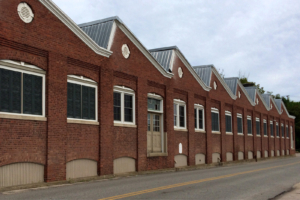
A random question on a forum made me wonder what the history of Guild factories looks like so I spent far too much time trying to track down addresses and current pictures of the current and past factories where Guild guitars were born made. This article is the result of that research.
New York City, NY
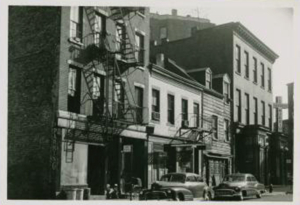
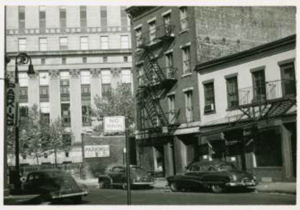
Entering the address into Google Maps and spending more time than I care to admit, I finally discovered these old pics of Pearl Street behind the court house which still stands today. The addresses listed on the photos show roughly 460-470 Pearl Street, so they don’t match precisely, but they give an idea of what the street was like back when cars looked like that.
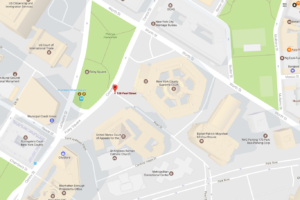
Progress, and all that.
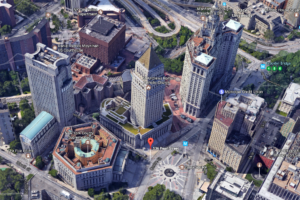
Sorry for the detour. I just wanted to learn about old Guild factory locations and fell down the rabbit hole of NYC history.
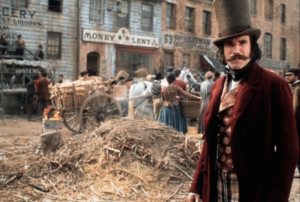
Hoboken, NJ
I had thought that the Hoboken Guild factory was on Newark Street, mostly because they named an entire line of guitars after the street. As it turns out (Hans’ book to the rescue again), the address of the building in question is actually on Observer Highway ( Newark Street is actually on the other side of the building), but I guess the “Observer Highway line of Guitars” doesn’t roll off the tongue like Newark Street does. Marketing: where facts are a secondary nuisance.
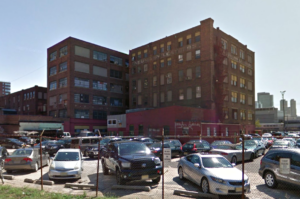
Dating back to the mid-1800s, this building has a fair bit of history to it. For some cool information about the Neuman Leather building as it stands today, check out this link and this link. Here is the plan from Hoboken to revitalize the Neumann Leather building.
Westerly, RI
This entire article got started when I visited the Westerly Guild plant. I was in Westerly to buy a rare Guild from someone who had lived in the town his entire life, and he was gracious enough to lead me to the plant and tell me all sorts of stories about the years when Guild occupied the building.
Yes, I was wearing a Jackson T-shirt that day, but in my defense, all of my Guild T-shirts flat-out suck. Hey Guild – make better shirts!
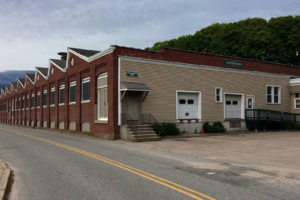
The current occupant of this part of the building is the Jonnycake Center food pantry and thrift store. Here’s an article about them that I found interesting.
After posting these pics on the Let’s Talk Guild forum, someone asked, “I wonder what the Hoboken Site is like today?”, and the rest of my day was spent researching Guild factories for this article. That’s how the creative part of my brain works. Luckily, that sometimes makes me money. Sadly, this is not one of those times.
Fender bought Guild in 1995 but didn’t move the factory out of Westerly until 2001.
Corona, CA
After Fender bought Guild and moved them out of Westerly (an act most of us will never forgive), Guilds were made in Corona California from 2001 to 2004.
This picture is from Google Maps and no matter what view I took, there was a tree blocking the many Fender signs. That kind of made me laugh because that’s not something most companies let happen. I mean, if there’s one thing that Marketing wants the world to see it’s the damn logo!
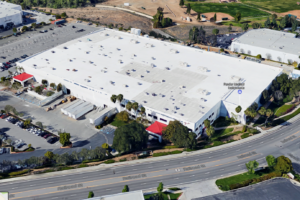
Tacoma, WA
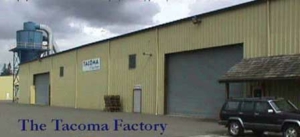
This location was surprisingly difficult for me to find, and it was only through this web page on Frets.com that I found the pic of the factory from a tour of the factory in 2001, some three years before Guild was involved.
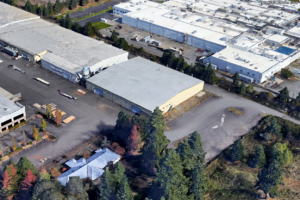
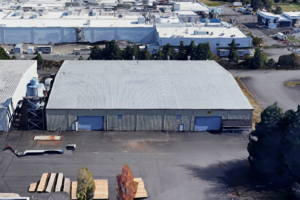
New Hartford, CT
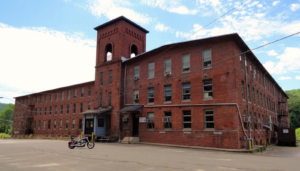
The pictures in this section are from this blog and are used with permission. I used these pics because they’re pretty damn great (and I don’t say that lightly) and were just perfect for what I wanted to do with them. The fact that they came from his blog is why you see a motorcycle in the first pic.
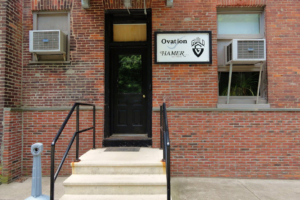
There was a fair bit of enthusiasm for the Guilds made in this plant, and I see people raving about them still. There was a fair bit of online marketing done with this factory as well, no doubt having to do with the fact that the era when this factory came online was all about online marketing and social media.
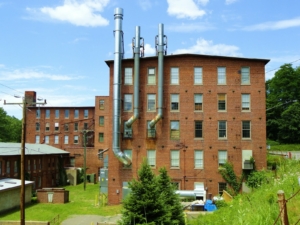
Fender closed this plant for Guild production in 2014 after only six years. As is typical of a post-Fenderized guitar factory, Here is a news article about what happenes to the large space after Fender pulls out.
Fender pulled out because they sold Guild. Finally.
Oxnard, California
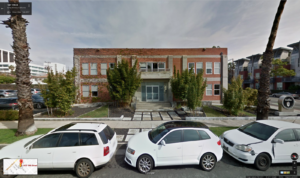
These pics are once again from Google Maps, and the first pic shows the Cordoba headquarters in Santa Monica California. From what I can tell this is just a business office and no guitars are actually built there since the guitars are made in Oxnard.
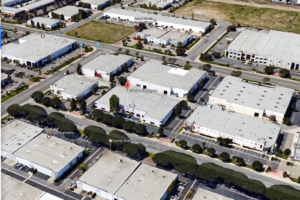
There are some pretty cool videos of this new factory as well as some information on the move on Guild’s webpage here. Here is another cool article about the Oxnard factory from Reverb.com. Again, marketing in the age of the Internet and social media makes for some nice presentations from the companies involved. Cordoba has also linked to a nice article about the new Guild ownership from Music Trades Magazine.
Cordoba so far seems willing to do things the right way which is the only way to make a Guild. It is my sincere hope that they care for the brand as much as we, it’s most fervent fans, so obviously do.
SPG Korea
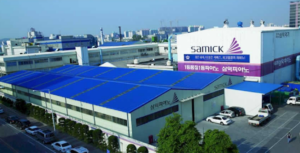
Because I see this questioned asked a lot, I figured I’d put it in print (er, screen) that Guild Newark Street guitars are made in the SPG factory in Korea. You can read more about that fact here, though I was unable to find much more about the plant or any details beyond what you see here.
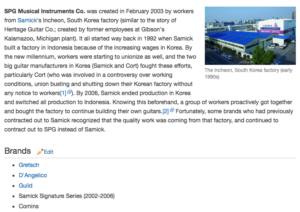
If you have more information about the SPG plant, especially if you have pictures, I’d love to include that information here and will of course give you credit for anything you provide.
GREE Factory
Thanks to Ralf (SFIV1967) over on LetsTalkGuild for this information about the GREE factory! The GREE factory is where Guild GAD models were produced and where the Westerly Collection models are manufactured
Grand Reward Education & Entertainment (GREE) was established in October 1995 serves more than ten OEM customers, as well as promoting its own brand name: Farida.
GREE owns a 120,000 sq. ft. multi-storey facility, on 180,000 sq. feet of land. Here, 900 employees, including a highly skilled production staff, handcraft 13,000 instruments monthly. These excellent products are exported around the world—55% of production output goes to the USA, and another 20% is exported to Japan.
The GREE factory is located in Hui Yang City, Guang Dong province, in southern China.
Conclusion
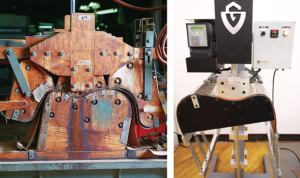
Given the number of factories I had to track down, I really hope that the current home of Guild in the US stays there for a long time. While I’m wishing, I’d really like to see the return of some of my favorite Guild electrics. How about it Cordoba? If you make a US-made Bluesbird again, I’ll buy one, assuming it’s not $5,000.
2019 Edit: Here is a visual timeline of the US factories and the companies that owned Guild
2024 Edit: Updated Timeline
Donate: PayPal Crypto:
ETH: 0x0AC57f8e0A49dc06Ed4f7926d169342ec4FCd461
Doge: DFWpLqMr6QF67t4wRzvTtNd8UDwjGTQBGs

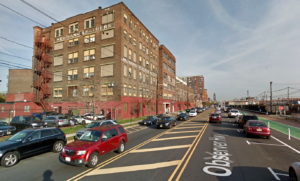
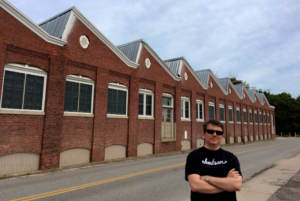
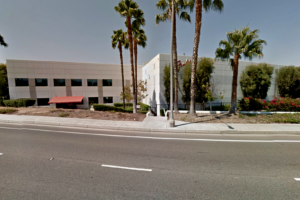
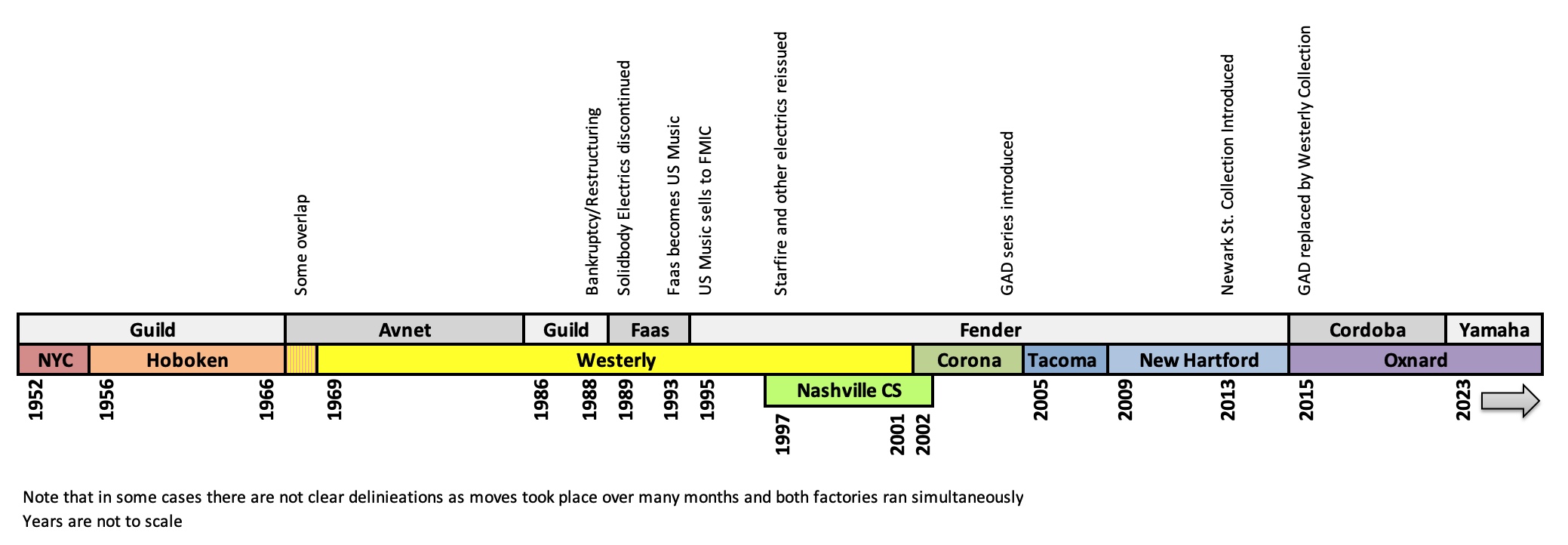
The SPG factory is owned and entirely staffed by former Samick factory workers. They have contracted out to many US based brands over the years and are responsible for some VERY well loved basses. I’ve known one of the owners TS Lee many times and viewed the factory. State of the art machines and very highly skilled workers. SPG pays a very high wage relative to other Korean factories and is determined to remain in Korea while most others are moving to cheap labor in Indonesia.
I’ve passed by that building in Hoboken hundreds of time never realizing that Guild guitars were made there. Thanks for all the great info.
OMG, this is great! I was born and raised at 215 Park Row and 165 Park Row, across from the Pearl Street location, so the location in NYC should be familiar, but alas, it is not. Those buildings on the right were torn down sometime in the late 1960s-early 1970s. I should know, the parking lot that replaced them was where I played as a child. Both my parents worked at the famous Supreme Court Bldg. on the left. The front of the bldg has been the scene of so many movie and TV scenes, it should be bronzed. Fast forward to the 1980s when I worked in Jersey City and Hoboken. Never knew about the “Boken factory. But by then everything had moved to R.I. and was buzzing. Eventually I moved to San Diego in the 1990s and lo and behold, it looks like the brand followed me to SoCal. I own a 2011 New Hartford D-50 in addition to a late 1990s Ovation Elite Std. You’re going to think I’m crazy, but sometimes they sound awfully alike. Best of everything to Guild. Great History. Thank you for the locator photos and story. JG
I bought a new Guild F30 in 1974 from a shop in Concord, CA, where I grew up. I paid $250 for it and traded my Conn in for a case. I move to Oregon and lived there for 25 years. Now I am in Barrington, RI and still have that guitar. The inside sticker fell of years ago so I am excited to know that this guitar came back home.
FMIC also made a few guitars in their Mexican factory. They were branded as Guild Arcos.
I’ve seen a few on Craigslist over the years, but never played one.
Do you know anything about George Gruhn’s involvement with Guild?
During the 80s, Gruhn partnered with some others and apparently purchased the company.
He re-designed the peghead shape on several acoustic models and introduced some new models.
All this was mentioned in various Guitar Player magazines of the mid-80s period, and there were quite a few Guild ads in the magazine as well.
Enjoyed very much your article on Guild historical locations.
I never sought Guild, a nice lady (store owner) steered me to them. I first owned their 12 string Sun Burst, F112SB in 1973 and within a year traded even, with her again, for my ’74 D-25. THIS WAS THE YEAR they redesigned and now had a Spruce top and Laminated Mahogany arched-back. 47 years later, a few years ago, it saw it’s first luthier. Not only did a reset, but new nut, saddle, and 4 frets as well as a shaved saddle. Wow! Is it ever beautiful and fun to play. It has matured very well.
In 1984 I won $1000 playing poker one night, very unusual night’s win for nickel, dime, quarter poker night. The next day paid cash for an F-50 blond Guild from same lady. It first saw same Luthier and also had a reset. It has the most amazing action of any acoustic guitar I have seen. Also beautiful and a blast to play.
Indianapolis, Thanks Linda, for directing me!
Westerly is one town away from me & my tech guy who worked for Guild during the 80s’-90s’ is closed today & I’m hoping you can help.
I’m looking at a M75 with a serial number that falls in 1978. I can’t find any reliable info that this guitar was built in Westerly.
I found conflicting info that all Guild’s during the 70s’ were made in R.I. then another says N.J.?
Please help
Answered via email, but for anyone else who comes across this a 1978 Guild was definitely made in Westerly.